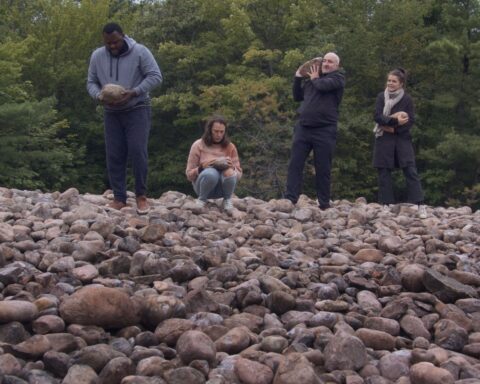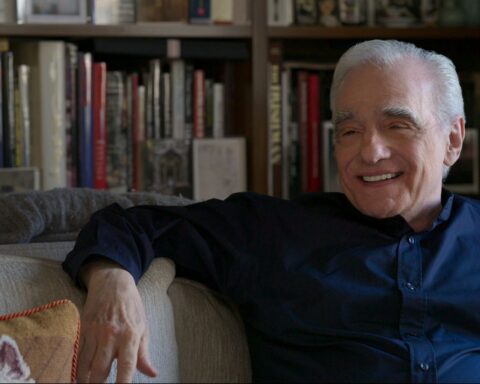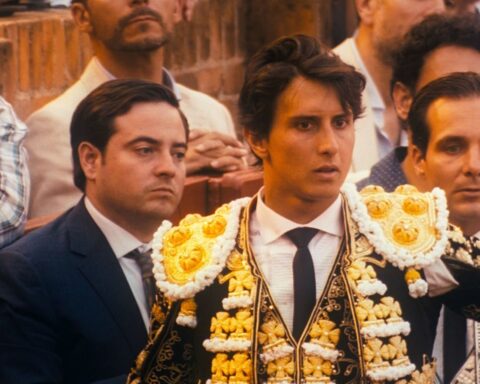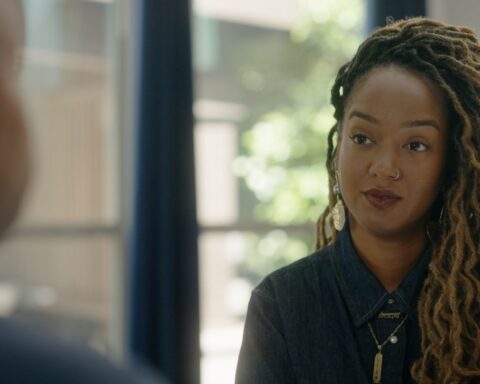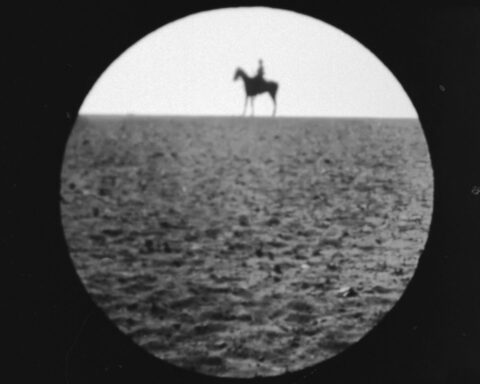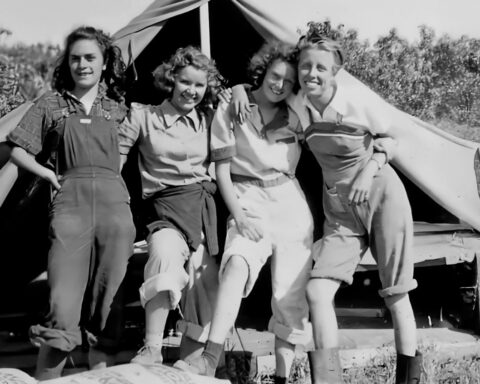“Have ambition! Be immortal!”
So exhorts Alejandro Jodorowsky towards the end of Frank Pavich’s Jodorowsky’s Dune, an account of the infamously idiosyncratic Chilean auteur’s ill-fated attempt to adapt Frank Herbert’s science-fiction literary epic Dune into a feature film. Positively received at the 2013 Cannes Film Festival, in December the film found itself on the Oscar shortlist for Best Documentary alongside such heavy hitters as CITIZENFOUR, The Overnighters and Life Itself, with which it might be paired as an instructive double-bill. Steve James’s tender, faintly hagiographic film about the life, career and tragic fatal illness of Roger Ebert is a portrait of a man who always did his best when watching filmmakers push themselves and their medium to the limit, while Pavich’s documentary tells the story of an artist whose most fervent desire was to show critics—and audiences and pretty much anybody with a set of eyeballs—something that they hadn’t seen before.
Shot primarily in the present but featuring remarkable circa-’70s concept art by H.R. Giger — who would go on to design Ridley Scott’s Alien — Jodorowsky’s Dune, like Serge Bromberg’s L’Enfer d’Henri-Georges Clouzout (2009), is that most irresistible of cinephile lures: a documentary about a big film by a major director that, for a variety of reasons, never got finished and exists solely in the realm of “what if?” It’s also terrifically entertaining, in part since Jodorowsky remains, in his ninth decade on Earth, an arrogant and raucous raconteur, but also because the basic formula of hubris plus comeuppance is intrinsically compelling and comic. Besides smartly making the case that the DNA of this unmade movie ended up being seeded into a number of subsequent and more successful projects, including George Lucas’s Star Wars (1977), which borrowed its sense of scale and grandeur, Jodorowsky’s Dune opens a window—or maybe in this case, an extra-dimensional portal—on the creative process, and how the gap between artistic yearning and practical reality is often wide and gaping enough to swallow even the most swaggering auteurs whole.
Two of the most famous movies about moviemaking orbit similarly protean figures: Les Blank’s Burden of Dreams (1982) and Fax Bahr, George Hickenlooper and Eleanor Coppola’s Hearts of Darkness: A Filmmaker’s Apocalypse (1991), which concern Werner Herzog and Francis Ford Coppola, respectively. Both of these iconic directors are shown at their mercurial worst in these documentaries, and yet Burden of Dreams and Hearts of Darkness are deeply affirmative works: they create contexts not only for the movies whose troubled productions they document in often excruciating detail, but also for the chaotic nature of artistic creation itself. Film Comment editor Kent Jones titled his excellent book of film criticism Physical Evidence after a quote from Claire Denis, who described the material traces of conflict or tension in any great film; in Burden of Dreams and Hearts of Darkness, the physical evidence is bloody and splayed all over the place.
An English-literature graduate who began his career making industrial films and profiles of musicians, with a particular emphasis on indigenous American genres from bluegrass to Cajun, Blank befriended the then-emergent German director Werner Herzog in the late-1970s. A charter member of the so-called New German Cinema along with Wim Wenders and Rainer Werner Fassbinder, Herzog was less allusive and cinephilic than his countrymen, preferring instead to focus on socially and geographically marginalized figures. The title of his 1970 comedy Even Dwarfs Started Small, about an uprising in an institutionalized community of midgets in the Canary Islands, reflects both his underdog thematics and the wry grandeur of his ambitions. Herzog’s films, big and small, fiction and documentary, seemed like acts of pure primal will; Pauline Kael famously called him a “metaphysical Tarzan.” And so when Blank filmed the director in a rare moment of humility in the 1980 short Werner Herzog Eats His Shoe (the result of a bet that Herzog had lost to Errol Morris), it was at once charming and, for some, deeply satisfying: a little bit of culinary payback for a filmmaker who always seemed to be champing at the bit.
Herzog ate the shoe, laces and all, and he also invited Blank to document the making of his next feature, Fitzcarraldo, an historical drama about the real-life Irish rubber (and some would say robber) baron Brian Sweeney Fitzgerald, whose dreams of building a European-style opera house in Iquitos, Peru, in the early part of the 20th century entailed doing something even more ridiculous: portaging a 320-ton steamship between sections of the Amazon River. (As played by Klaus Kinski, Fitzgerald is a mad striver with a God complex, a trans-Atlantic cousin to Daniel Day-Lewis’s oilman in There Will Be Blood.) A stranger-than-fiction tale of megalomaniacal business practices that doubles as a neat précis of the colonialist mentality—bring culture to the savages, by any means necessary— Fitzcarraldo was an ideal project for Herzog, so much so that it turned into a disaster. As Blank’s film shows, it was as if the director identified so strongly with his subject’s demented modus operandi that he became possessed by Fitzgerald’s spirit, culminating in the terrifying decision to actually try to drag a re-creation of a steamship through the jungle.
Whatever friendship Blank and Herzog had was sorely tested while the two were together on location. Burden of Dreams is not the first making-of film, but its intermingling of intimacy and critique were basically unprecedented at the time and proved deeply influential on other behind-the-scenes documentaries. Blank allows Herzog to dominate the movie and yet he also undermines his friend at every turn. His lush images of the Peruvian landscape are at odds with Herzog’s description of the place as an unforgiving hell-scape. Blank’s respect for Indigenous traditions also gives Burden of Dreams a political dimension. Through carefully selective editing, he insinuates that Herzog’s coercion of native workers for his hugely scaled (and Western-financed) production connects him to a tradition of enslavement and exploitation and turns Fitzcarraldo into a troublingly self-allegorizing film.
As its enshrinement in the Criterion Collection suggests, Burden of Dreams is a significant piece of filmmaking: a precisely measured work by a clever and conscientious director. The same can be said of Hearts of Darkness: A Filmmaker’s Apocalypse, except that, as a multi-author work, it feels more frantic and less of a piece—not a bad set of qualities for a documentary that takes psychosis as its subject. Around the same time that Werner Herzog was helping to legitimize contemporary German cinema, Francis Ford Coppola had already remade the American studio epic in his own image: the first two Godfather films were critical and commercial smashes that placed him at the front ranks of an entire industry. The New American cinema of the 1970s was inaugurated by Easy Rider (1968) and its tale of lovable screw-ups whose failure—“we blew it”—is framed by director Dennis Hopper as a Pyrrhic victory. A decade later, Coppola would live out this Icarus-ish mythological arc by attempting to fly higher than even his most turbo-powered peers, inspired by Joseph Conrad’s novel Heart of Darkness, a masterwork whose filmic adaptation had flummoxed even Orson Welles.
Picking up on the novel’s themes of racial anxiety and colonial cruelty, Coppola had the idea to update and transpose Conrad’s action from the Congo in the 1800s to the waning days of the Vietnam War. Decamping to Manila with a massive cast and crew, all underwritten by United Artists and the director’s own American Zoetrope studio, Coppola was angling to kill two very big birds with one stone: Apocalypse Now would do justice to Conrad’s classic and also be the first major American movie to comment on the most polarizing foreign war in the country’s history. But the weather had other plans: a typhoon shut down production and provided a kind of primal scene for a series of other man-made but no less elemental disasters to come. To recap everything that happened during the making of Apocalypse Now would take up more space than I have here. Suffice to say that Coppola’s desire to make what was, in his own estimation, “more than a movie,” combined with the mental and physical frailties of certain of his collaborators—Martin Sheen had a heart attack; Marlon Brando showed up overweight and unrehearsed—conspired to create an atmosphere thick with panic and foreboding. Piggybacking on the shoot with a camera of her own, Coppola’s wife, Eleanor, was present for the entire 238-day shoot, and her footage is in its own way as remarkable as anything that made it into Apocalypse Now. In some ways it functions as a mirror: it’s also full of indigenous rituals, sudden violence and the spectacle of an agonized dictator surveying the ruins of his empire—Coppola as Kurtz, with the middleman of dramaturgical representation cut out of the equation. But where Les Blank was able to film Herzog from a critical distance, Eleanor Coppola’s relationship to her subject created a different sort of tension. With Apocalypse Now running overtime and over budget and imperiling Coppola’s career along with his financier’s investment, was she collecting evidence for the prosecution, or for the defence?
Hearts of Darkness is more than Eleanor Coppola’s home movies: along with her after-the-fact collaborators, she worked to turn it into a traditional making of documentary, including 10-years-later interviews with as many of the major players as possible. What’s remarkable about the film, however, is that even though we know that its story had a more-or-less happy ending— Apocalypse Now was a big hit and is considered a classic American film, arguably Coppola’s last masterpiece— the questions it raises and then refuses to definitively answer are troubling. Is it a good thing or a bad thing that a crew of several hundred people and at least as many locals had their lives upended and disrupted in the service of an individual vision? Not only did the making of Apocalypse Now anticipate the production of Fitzcarraldo, it also to some extent mirrored the story of Barry Sweeney Fitzgerald, except instead of trying to build an opera house in the jungle, Coppola was trying to make a movie—with the same high-flown aspirations and the same reckless disregard for trampling all over another part of the world in the name of putting his foot down for art.
What ultimately links Jodorowsky’s Dune to Burden of Dreams and Hearts of Darkness is nostalgia for the notion of a freer cinema in the 1970s, a time when filmmakers took risks. This is a cliché, but clichés are often rooted in some kind of truth. Apocalypse Now, Fitzcarraldo and Dune (1984)—not Jodorowsky’s Dune, but David Lynch’s, a boxoffice bomb—were all examples of filmmakers chasing immortality, and in the process became cautionary tales about that sort of unbridled ambition and its figurative and literal costs. It’s no surprise that Herzog eschewed epics after Fitzcarraldo, nor that Lynch fled cinema for television shortly after Dune or that Coppola’s career fell into shambles sometime in the mid-1980s. Whether or not one thinks that any or all of the filmmakers profiled in these documentaries “blew it” in one way or another, these behind-the-scenes docs share a deep and compelling ambivalence about what it means when somebody’s grasp exceeds his reach and, by turning cameras on men obsessively focused on their own lenses, they place them under a microscope.




